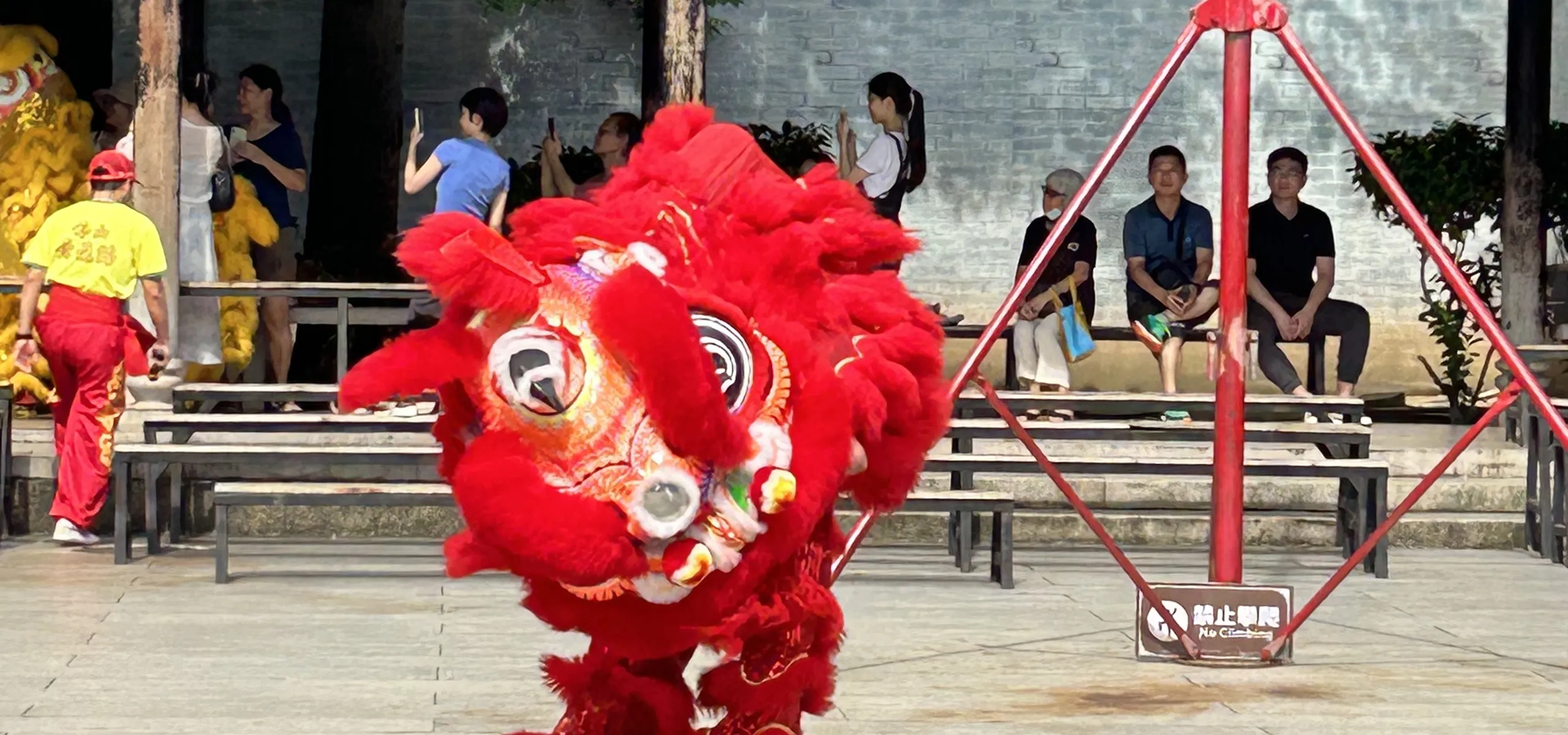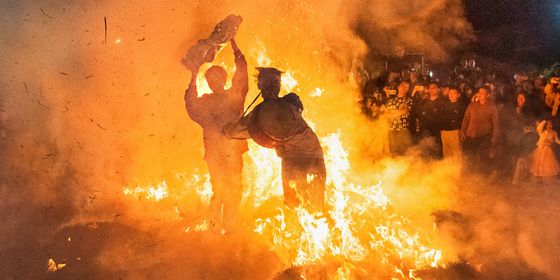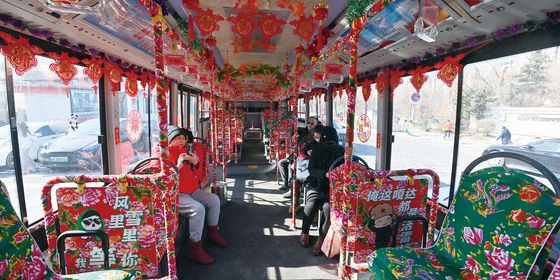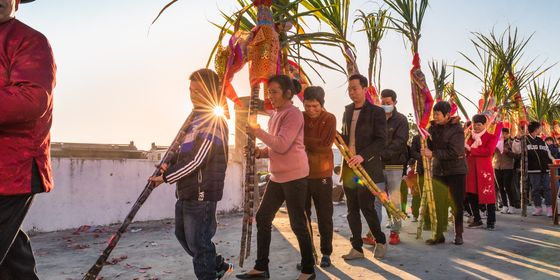Peek inside the workshop of a Chinese artisan, who is trying to keep alive the centuries-old craft of making “heads” for traditional lion dance
Bamboo and silk strips cover every surface in He Yubin’s workshop, and there’s not a computer in sight. But still the 37-year-old jokes that he’s an expert in “3D modeling.” “I’m just using a human brain instead of an electronic brain,” says the artisan, who makes the heads of the “dancing lions” seen at traditional Chinese festivals around the world.
The skeleton of the lion’s head alone takes two or three days for an experienced artisan to make. Hundreds of bamboo strips and over 1,300 steps are involved in this centuries-old craft. He Yubin is the “six generation” inheritor of this craft, and his family runs the largest manufacturer of lion dance costumes (or so he claims) in the city of Foshan in southern China.
As the folk saying goes, “Where there are Chinese, there is lion dancing.” The performance, which dates back at least to the Tang dynasty (618 – 907), is often seen during holidays or other festive occasions—such as a business opening or family moving to a new home—as lions are believed to be auspicious animals able to protect people against evil and harm. In the Song dynasty (960 – 1127), the performance was brought by migrants to the south and integrated with local forms of martial arts to create the Southern style of lion dance, also known as xingshi (醒狮, “awaking lion”).
Lion-dancing has since traveled with Chinese emigrants all over the world, and can be seen in Chinatowns and traditional Chinese holidays on every continent. Over 50 teams from more than 20 countries and regions participated in the International Dragon and Lion Dance Virtual Competition in 2022. Many regions of China have their own style of lion dance and costume, and the Foshan style, based in the city of the same name in Guangdong province, is one of the most exacting and renowned.













